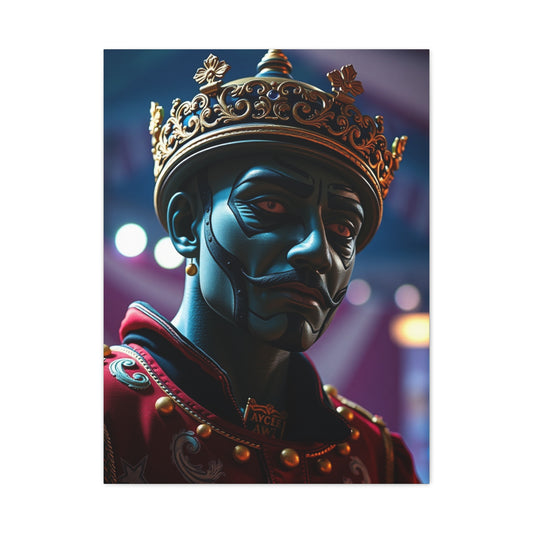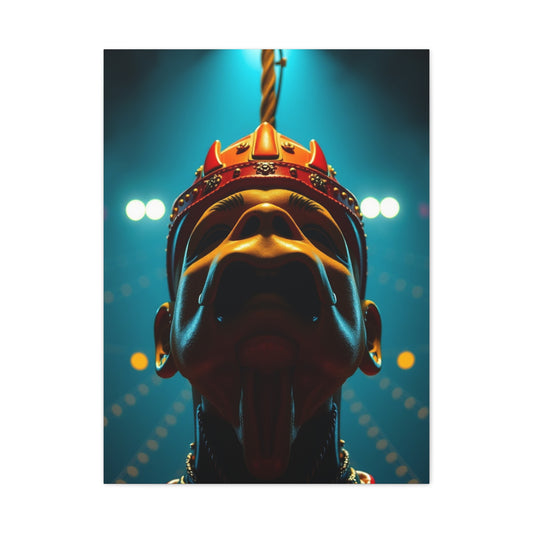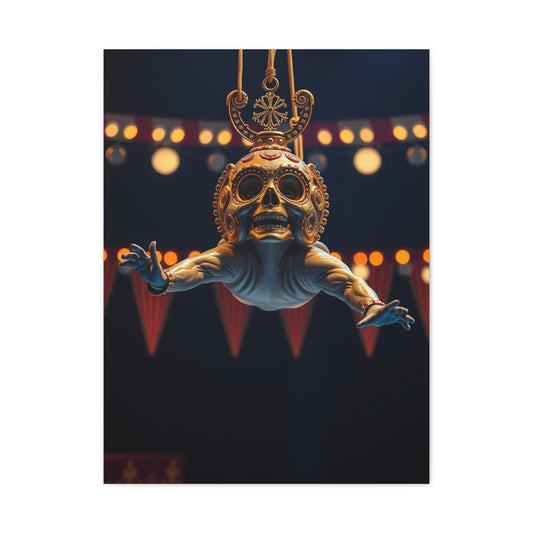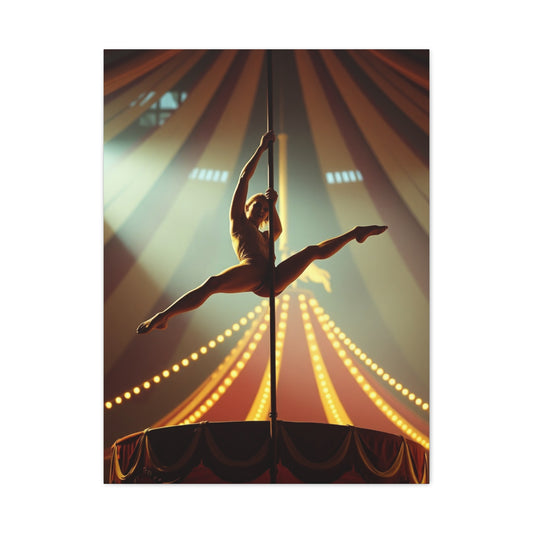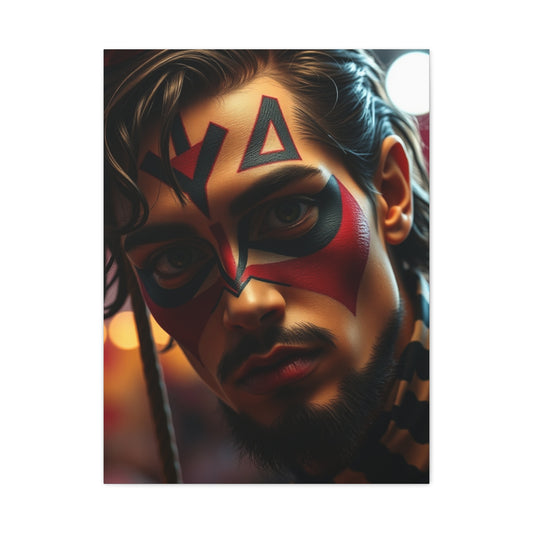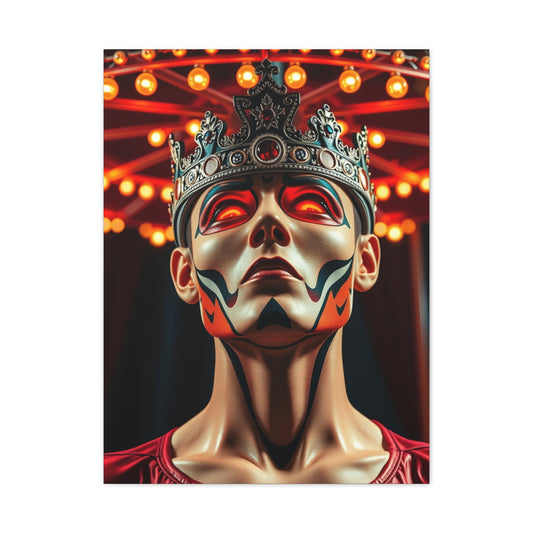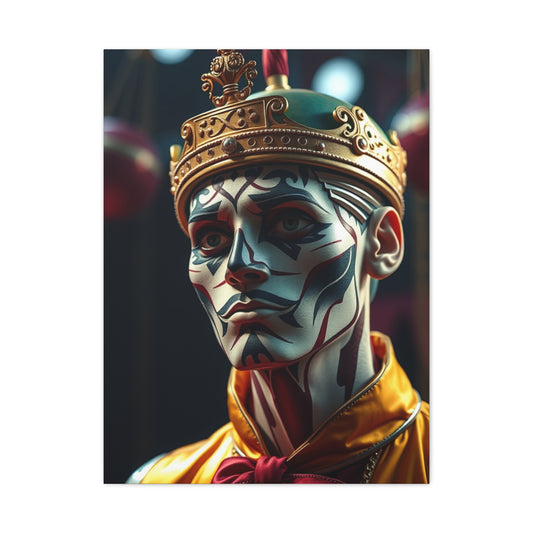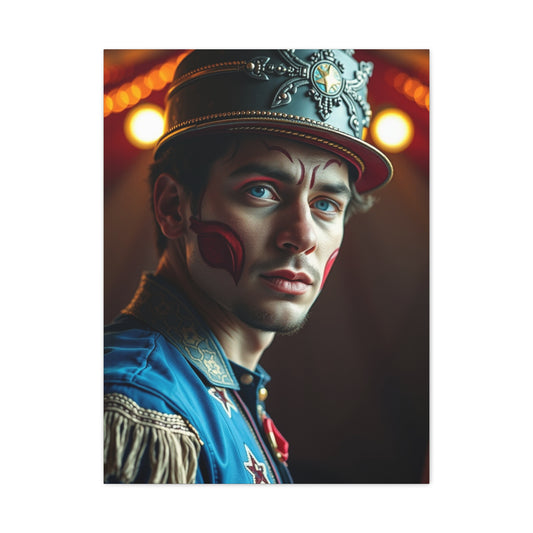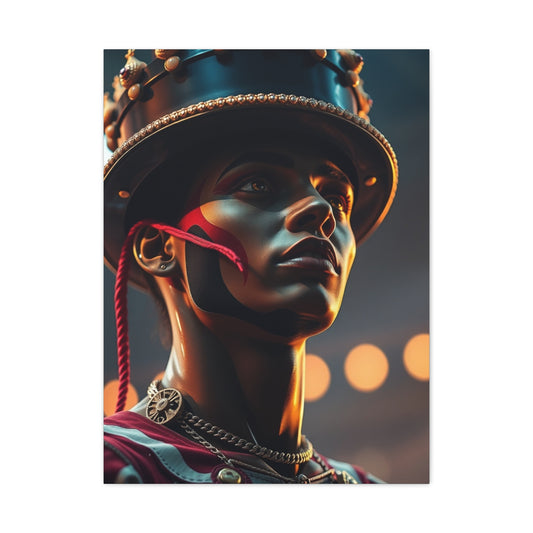Vintage Circus Posters and Prints: Adding Nostalgia to Your Wall Art Collection
The realm of interior design has witnessed a remarkable transformation in recent years, particularly in how we approach the integration of cultural heritage with modern aesthetic sensibilities. This evolution represents more than mere decoration; it embodies a sophisticated understanding of how visual elements can serve multiple purposes within contemporary living and learning spaces. The convergence of traditional craftsmanship with cutting-edge design principles has created unprecedented opportunities for homeowners, educators, and design professionals to create environments that are both visually stunning and intellectually stimulating.
Contemporary wall art collections have emerged as powerful tools for cultural preservation and educational enhancement. These carefully curated pieces serve as windows into rich historical narratives while simultaneously addressing the aesthetic demands of modern interior spaces. The strategic placement and selection of such artwork can transform ordinary walls into dynamic learning environments that engage viewers on multiple cognitive and emotional levels.
The significance of this approach extends beyond superficial beautification. Research in environmental psychology has consistently demonstrated that well-designed spaces can significantly impact cognitive function, emotional well-being, and learning outcomes. When wall art collections are thoughtfully integrated into educational settings, they create immersive experiences that facilitate deeper understanding and appreciation of cultural heritage while supporting various pedagogical objectives.
Modern design philosophy emphasizes the importance of creating spaces that reflect both personal identity and universal human experiences. Wall art collections that draw from diverse cultural traditions offer unique opportunities to achieve this balance. They provide focal points for conversation, reflection, and learning while contributing to the overall ambiance and character of a space.
The selection process for such collections requires careful consideration of multiple factors including color harmony, thematic coherence, historical accuracy, and educational value. Each piece must contribute to the overall narrative while maintaining its individual artistic merit. This delicate balance between cohesion and diversity is what distinguishes exceptional collections from merely decorative arrangements.
The Timeless Charm of Circus Art
The contemporary design landscape has embraced a philosophy that celebrates the synthesis of traditional artistic expressions with modern aesthetic principles. This approach recognizes that authentic cultural heritage need not be relegated to museums or preserved in static displays. Instead, it can be dynamically integrated into contemporary living spaces where it continues to evolve and inspire new generations.
This design philosophy rests on several fundamental principles. First, it acknowledges that traditional art forms possess timeless qualities that transcend temporal boundaries. The geometric patterns found in classical architectural elements, for instance, continue to resonate with contemporary audiences because they embody mathematical principles and aesthetic relationships that remain relevant across centuries.
Second, this approach recognizes that modern living spaces require functional beauty. Contemporary homeowners seek artwork that not only pleases the eye but also serves practical purposes such as creating focal points, defining spatial boundaries, or supporting specific activities. Wall art collections that successfully merge traditional and modern elements achieve this dual functionality by offering visual richness while maintaining contemporary relevance.
Third, the philosophy emphasizes authenticity over imitation. Rather than simply copying traditional designs, contemporary artists and designers draw inspiration from historical sources to create new works that honor their origins while addressing current aesthetic and functional requirements. This approach ensures that traditional art forms remain vital and continue to evolve rather than becoming fossilized representations of past cultures.
The implementation of this philosophy requires sophisticated understanding of both historical contexts and contemporary design principles. Designers must possess deep knowledge of traditional artistic techniques, symbolic meanings, and cultural significance while also understanding current trends in color theory, spatial design, and material science.
Successful integration also depends on careful attention to scale, proportion, and placement. Traditional motifs that worked beautifully in their original contexts may require adaptation to function effectively in contemporary spaces. This adaptation process requires artistic sensitivity and technical skill to preserve the essence of traditional designs while making them suitable for modern applications.
A Brief History of Circus Posters
The integration of cultural heritage elements into contemporary interior spaces represents a sophisticated approach to design that goes far beyond superficial decoration. This practice involves careful consideration of historical contexts, symbolic meanings, and aesthetic relationships to create environments that are both visually compelling and culturally meaningful.
Cultural heritage in design serves multiple functions simultaneously. It provides visual interest through rich patterns, vibrant colors, and intricate details that capture attention and create focal points within spaces. It also serves as a bridge between past and present, allowing contemporary inhabitants to connect with historical traditions and cultural narratives that might otherwise remain abstract or distant.
The educational value of such integration cannot be overstated. When cultural heritage elements are thoughtfully incorporated into living and learning spaces, they create opportunities for ongoing education and cultural appreciation. Viewers encounter these elements in their daily routines, leading to repeated exposure that facilitates deeper understanding and appreciation over time.
This approach also supports cultural preservation efforts by maintaining the relevance and visibility of traditional art forms. Rather than confining cultural heritage to specialized institutions, integration into contemporary spaces ensures that these traditions remain part of everyday experience and continue to influence current artistic and design practices.
The psychological impact of cultural heritage elements in interior design has been extensively studied. Research indicates that exposure to culturally meaningful artwork can enhance sense of identity, promote cultural pride, and foster appreciation for diversity. These effects are particularly pronounced when the cultural elements are presented in contexts that encourage reflection and engagement rather than passive observation.
Contemporary spaces that successfully integrate cultural heritage elements typically employ several strategies. They may use traditional motifs as inspiration for modern interpretations, incorporate authentic artifacts alongside contemporary pieces, or create thematic arrangements that tell coherent cultural stories. The key is to achieve balance between respect for traditional forms and adaptation to contemporary needs and aesthetics.
The selection and placement of cultural heritage elements requires careful consideration of multiple factors. The historical significance of specific motifs, their original cultural contexts, and their symbolic meanings must all be understood and respected. At the same time, these elements must work harmoniously within contemporary design schemes and contribute to the overall functionality and aesthetic appeal of the space.
Strategic Color Theory and Visual Impact Assessment
Color theory plays a fundamental role in the success of wall art collections, particularly when integrating traditional cultural elements into contemporary spaces. The strategic use of color can enhance the emotional impact of artwork, create visual harmony within spaces, and support specific educational or psychological objectives.
Traditional color palettes often carry deep cultural significance that extends beyond mere aesthetic preference. The rich blues found in classical architectural elements, for example, may represent concepts such as divinity, infinity, or protection in their original cultural contexts. When incorporated into contemporary wall art collections, these colors continue to evoke these associations while also contributing to the overall visual scheme of modern spaces.
The intensity and saturation of colors significantly impact their psychological effects on viewers. Vibrant, highly saturated colors tend to energize and stimulate, making them excellent choices for spaces intended to promote activity and engagement. More muted tones create calming effects that support contemplation and relaxation. Successful wall art collections often incorporate both approaches, using color variation to create visual rhythm and support different functional areas within spaces.
Color harmony principles guide the selection and arrangement of artwork within collections. Complementary color schemes create dynamic tension and visual excitement, while analogous schemes promote unity and tranquility. The most sophisticated collections employ multiple color relationships to create complex visual experiences that reward extended viewing and support various mood states.
The cultural associations of specific colors must also be considered when developing collections for educational applications. Different cultures attribute varying symbolic meanings to colors, and these associations can significantly impact the effectiveness of educational displays. Red, for instance, may represent good fortune and prosperity in some traditions while symbolizing danger or warning in others.
Lighting conditions significantly affect color perception and must be carefully considered during the selection and installation process. Natural light varies throughout the day and across seasons, while artificial lighting can be controlled to enhance specific color relationships. The most effective installations consider both types of lighting and may include adjustable elements that optimize color presentation under different conditions.
The psychological impact of color extends beyond immediate emotional responses to include longer-term effects on behavior and cognition. Environments dominated by certain color palettes can influence productivity, creativity, and social interaction patterns. Educational spaces, in particular, benefit from color schemes that support learning objectives and create conducive atmospheres for different types of activities.
Vintage Circus Prints for Your Collection
The integration of wall art collections into educational environments requires sophisticated understanding of pedagogical principles and learning psychology. Effective educational integration goes beyond simply hanging attractive pictures on walls; it involves creating cohesive visual narratives that support specific learning objectives and enhance educational experiences.
Contemporary educational theory emphasizes the importance of multi-sensory learning environments that engage students through various channels simultaneously. Visual arts can play crucial roles in these environments by providing focal points for discussion, illustrating abstract concepts, and creating memorable associations that aid retention and recall.
The placement and organization of educational wall art requires careful consideration of sight lines, accessibility, and interaction patterns within learning spaces. Artwork positioned at appropriate heights for intended audiences ensures maximum engagement, while strategic placement near areas where students naturally gather or pause can increase exposure and encourage spontaneous learning interactions.
Thematic organization of wall art collections can support curriculum objectives by providing visual reinforcement of key concepts and themes. Historical timelines, geographic representations, and cultural comparisons can all be effectively communicated through carefully selected and arranged artwork. This approach transforms passive wall space into active learning resources that support formal instruction and independent exploration.
Interactive elements can enhance the educational value of wall art installations. QR codes linking to additional information, tactile elements that invite physical engagement, and changeable displays that evolve throughout academic periods all contribute to dynamic learning environments that maintain student interest and support diverse learning styles.
The assessment of educational effectiveness requires systematic evaluation of student engagement and learning outcomes. Pre- and post-installation surveys can measure changes in student attitudes, knowledge retention, and cultural awareness. Observational studies of student behavior in spaces before and after installation provide additional insights into the impact of visual arts on learning environments.
Professional development opportunities for educators can maximize the educational potential of wall art installations. Training programs that help teachers incorporate visual arts into their instructional practices, develop discussion questions related to displayed artwork, and create assignments that utilize visual resources can significantly enhance educational outcomes.
Comprehensive Installation and Maintenance Protocols
The successful installation of wall art collections requires meticulous planning and execution to ensure both aesthetic appeal and long-term preservation. Professional installation protocols address multiple considerations including structural requirements, environmental conditions, security measures, and accessibility standards.
Structural assessment represents the foundation of any installation project. Wall surfaces must be evaluated for their ability to support the intended artwork, considering both immediate weight requirements and long-term stability. Different wall construction types require specific mounting techniques and hardware to ensure secure installation without compromising either the artwork or the building structure.
Environmental control systems play crucial roles in preserving artwork and maintaining optimal viewing conditions. Temperature and humidity fluctuations can cause significant damage to various art media, while excessive light exposure can lead to fading and deterioration. Climate control systems must be designed to maintain stable conditions while providing adequate air circulation to prevent moisture accumulation and mold growth.
Security considerations encompass both theft prevention and protection from accidental damage. Artwork placement must balance accessibility for viewing with protection from casual contact, while security systems should provide comprehensive monitoring without creating intrusive or intimidating environments that discourage engagement.
The installation process itself requires coordination between multiple specialists including conservators, installers, electricians, and security professionals. Detailed project timelines ensure that all aspects of installation proceed smoothly and that artwork is protected throughout the process. Temporary protective measures may be necessary during construction or renovation activities that could generate dust, debris, or other potentially harmful materials.
Documentation requirements include detailed condition reports, installation photographs, and maintenance schedules that support long-term preservation efforts. Digital records of installation specifications, including mounting techniques, environmental settings, and security configurations, facilitate future maintenance and potential reinstallation activities.
Quality assurance protocols verify that installations meet professional standards and satisfy specific project requirements. Final inspections should address aesthetic considerations, technical functionality, and safety compliance to ensure that installations are ready for public viewing and will provide years of reliable service.
Systematic Maintenance and Preservation Approaches
Long-term preservation of wall art installations requires comprehensive maintenance programs that address both preventive care and responsive treatment needs. Systematic approaches to maintenance ensure that artwork remains in optimal condition while minimizing disruption to viewing and educational activities.
Preventive maintenance programs focus on environmental monitoring and control systems that protect artwork from gradual deterioration. Regular inspection schedules identify potential problems before they become serious threats, while routine maintenance activities such as cleaning and adjustment maintain optimal presentation conditions.
Environmental monitoring systems track temperature, humidity, light levels, and air quality to ensure that conditions remain within acceptable parameters for artwork preservation. Automated systems can alert maintenance staff to deviations from established standards, enabling rapid response to prevent damage from environmental fluctuations.
Cleaning protocols must be carefully tailored to specific art media and installation contexts. Different materials require different cleaning techniques and frequencies, and inappropriate cleaning methods can cause irreversible damage. Professional conservation standards guide the development of cleaning schedules and techniques that preserve artwork while maintaining attractive presentation.
Regular condition assessments document the ongoing state of artwork and identify changes that may indicate deterioration or damage. Photographic documentation provides baseline references for comparison over time, while detailed written reports record observations that may not be apparent in photographs.
Emergency response procedures address potential threats including water damage, fire, vandalism, and natural disasters. Evacuation plans for valuable artwork, temporary protection measures, and damage assessment protocols ensure that collections can be protected and preserved even during crisis situations.
Staff training programs ensure that maintenance personnel possess the knowledge and skills necessary to care for wall art installations properly. Training should cover proper handling techniques, environmental monitoring procedures, emergency response protocols, and basic conservation principles that guide daily maintenance activities.
Personalization Techniques
The development of customized wall art collections requires sophisticated understanding of individual needs, preferences, and objectives. Personalization techniques can adapt general design principles to specific contexts, creating unique installations that serve particular functional and aesthetic requirements.
Needs assessment processes identify specific requirements for customized installations including functional objectives, aesthetic preferences, budget constraints, and timeline considerations. Comprehensive assessments consider both immediate requirements and long-term goals to ensure that customized solutions will remain relevant and valuable over extended periods.
Design development proceeds through iterative processes that refine concepts based on client feedback and practical constraints. Initial concepts may undergo multiple revisions as designs are adapted to specific spaces, adjusted for budget considerations, or modified to address functional requirements that become apparent during the development process.
Material selection for customized installations requires careful consideration of performance characteristics, aesthetic qualities, and compatibility with existing environmental conditions. Custom installations may incorporate unusual materials or techniques that require specialized knowledge and handling procedures to ensure successful implementation.
Production oversight ensures that customized artwork meets established quality standards and satisfies specific design requirements. Regular progress reviews during production phases allow for adjustments and corrections that prevent costly mistakes and ensure satisfactory final results.
Installation coordination becomes particularly critical for customized projects where standard procedures may not apply. Custom mounting systems, unusual placement requirements, or integration with existing architectural features all require specialized planning and execution to achieve successful results.
Post-installation evaluation provides opportunities to assess the success of customization efforts and identify areas for potential improvement. Client satisfaction surveys, performance assessments, and long-term monitoring help refine customization techniques and inform future projects.
Economic Impact and Investment Value Analysis
The economic implications of wall art collection investments extend beyond initial purchase costs to include long-term value considerations, maintenance expenses, and potential return on investment opportunities. Comprehensive economic analysis provides foundations for informed decision-making regarding collection development and management.
Initial investment costs encompass artwork acquisition, professional installation, and necessary infrastructure modifications such as lighting systems, security measures, and environmental controls. Accurate cost estimation requires consideration of all project phases from initial planning through final installation and commissioning.
Long-term value preservation depends on proper selection, installation, and maintenance practices. High-quality artwork properly cared for typically maintains or increases its value over time, while poor-quality pieces or inadequate maintenance can result in significant depreciation. Professional appraisal services can provide ongoing assessment of collection values and guide management decisions.
Maintenance and operation costs include routine cleaning, environmental system operation, security monitoring, and periodic conservation treatments. These ongoing expenses should be factored into total cost of ownership calculations to provide realistic assessments of long-term investment requirements.
Insurance considerations become particularly important for valuable collections. Proper coverage requires accurate appraisals, comprehensive documentation, and understanding of specific risks associated with different types of artwork and installation contexts. Insurance costs should be included in overall economic assessments of collection management.
Tax implications may provide significant benefits for certain types of collection investments. Charitable donations of artwork, business expense deductions for educational installations, and depreciation schedules for commercial applications can all impact the net cost of collection development and should be considered in economic planning.
Return on investment calculations for educational installations may include both quantifiable benefits such as increased property values or enrollment numbers, and intangible benefits such as enhanced reputation or improved learning outcomes. These broader impacts should be considered when evaluating the economic justification for collection investments.
Cognitive Enhancement Benefits
The psychological effects of wall art collections extend far beyond aesthetic appreciation to include significant impacts on cognitive function, emotional well-being, and social interaction patterns. Understanding these effects enables more strategic deployment of visual arts to achieve specific psychological and educational objectives.
Cognitive enhancement through visual arts exposure has been documented in numerous research studies. Regular exposure to complex visual stimuli can improve pattern recognition skills, enhance creative thinking abilities, and support development of visual literacy. These benefits are particularly pronounced in educational environments where students engage with artwork as part of structured learning activities.
Emotional regulation benefits result from exposure to carefully selected artwork that promotes desired emotional states. Calming images can reduce stress and anxiety levels, while energizing compositions can enhance motivation and engagement. The strategic use of different artistic styles and subject matters can support various therapeutic and educational objectives.
Social interaction facilitation occurs when shared artwork provides focal points for conversation and collaborative activities. Group discussions about artwork, collaborative interpretation exercises, and shared aesthetic experiences all contribute to community building and social cohesion within educational and residential environments.
Memory enhancement techniques utilizing visual arts leverage the brain's natural tendency to form strong associations with vivid visual stimuli. Information presented in conjunction with memorable artwork benefits from improved retention and recall, making visual arts valuable tools for educational applications.
Stress reduction mechanisms activated by exposure to beautiful and meaningful artwork have measurable physiological effects including reduced cortisol levels, lowered blood pressure, and improved immune system function. These benefits contribute to overall health and well-being while supporting optimal conditions for learning and productivity.
Cultural identity reinforcement through exposure to heritage artwork supports psychological well-being by strengthening connections to cultural traditions and community membership. These effects are particularly important for individuals living in culturally diverse environments where maintaining cultural identity may require intentional effort.
Specialized Maintenance
Advanced conservation technologies are revolutionizing approaches to artwork preservation and maintenance, providing new tools and techniques that extend the lifespan of collections while reducing maintenance requirements and costs. These innovations enable more effective preservation of cultural heritage while maintaining optimal presentation conditions.
Non-invasive analysis techniques including spectroscopy, imaging systems, and environmental monitoring provide detailed information about artwork condition without requiring physical contact or sampling. These technologies enable early detection of deterioration, identification of previous restoration work, and assessment of conservation treatment effectiveness.
Climate control innovations include smart systems that adapt automatically to changing environmental conditions while maintaining optimal preservation parameters. Advanced filtration systems remove pollutants and contaminants that threaten artwork while maintaining proper air circulation and humidity levels.
Protective coating technologies provide enhanced protection from environmental threats while maintaining visual clarity and color accuracy. Nanotechnology applications include self-cleaning surfaces, UV-filtering coatings, and antimicrobial treatments that reduce maintenance requirements while improving preservation outcomes.
Digital documentation systems create comprehensive records of artwork condition, treatment history, and environmental exposure that support informed conservation decisions. High-resolution imaging, 3D scanning, and multispectral photography provide detailed baseline documentation that enables precise monitoring of changes over time.
Robotic maintenance systems are being developed for routine cleaning and monitoring activities in large installations. These systems can provide consistent care while reducing human exposure to potentially hazardous conditions and minimizing disruption to viewing activities.
Remote monitoring capabilities enable continuous surveillance of collection conditions from distant locations, providing immediate alerts of potential problems and enabling rapid response to threatening conditions. Cloud-based systems provide secure data storage and analysis capabilities that support comprehensive collection management programs.
Cultural Preservation Through Contemporary Design Integration
The integration of cultural heritage elements into contemporary design contexts serves crucial preservation functions that extend beyond mere aesthetic considerations. This approach ensures that traditional art forms remain relevant and accessible to contemporary audiences while supporting ongoing cultural transmission and appreciation.
Traditional artistic techniques and knowledge systems face threats from modernization, urbanization, and cultural homogenization. Integration into contemporary design projects provides economic incentives for preserving traditional skills while creating new applications that ensure their continued relevance and development.
Master artisan programs that connect traditional craftspeople with contemporary designers facilitate knowledge transfer while supporting economic sustainability for traditional arts communities. These collaborations produce innovative works that honor traditional techniques while addressing contemporary aesthetic and functional requirements.
Documentation initiatives that accompany contemporary integration projects create permanent records of traditional knowledge and techniques. Video recordings of traditional processes, written descriptions of symbolic meanings, and photographic documentation of traditional contexts all contribute to comprehensive preservation efforts.
Educational outreach programs connected to integration projects raise awareness of traditional arts and their cultural significance. Public lectures, workshops, and demonstration events provide opportunities for community engagement and cultural education that support broader preservation objectives.
Cultural authenticity considerations require careful balance between preservation and adaptation. Successful integration projects respect traditional forms and meanings while allowing for contemporary interpretation and application. This balance ensures that cultural heritage remains vital and continues to evolve rather than becoming fossilized representations of past cultures.
International cooperation initiatives facilitate sharing of preservation techniques, cultural knowledge, and artistic traditions across cultural boundaries. These programs support global cultural diversity while creating opportunities for cross-cultural learning and artistic innovation.
Professional Development
The successful implementation of educational wall art collections requires specialized knowledge and skills that extend beyond traditional interior design or art education. Comprehensive professional development programs provide essential training for educators, designers, and cultural professionals involved in collection development and management.
Curriculum development for professional training programs addresses multiple competency areas including art history and cultural studies, conservation principles and practices, educational theory and instructional design, technology integration and digital media, and project management and financial planning. These interdisciplinary programs prepare professionals to handle the complex challenges of contemporary collection management.
Practical training components provide hands-on experience with installation techniques, maintenance procedures, and educational programming. Workshop formats enable participants to practice skills under supervision while learning from experienced practitioners and industry experts.
Certification programs establish professional standards and provide recognition for individuals who demonstrate competency in specialized areas of collection management and educational programming. These credentials support career development while ensuring that collections receive appropriate professional care and management.
Continuing education requirements ensure that professionals maintain current knowledge of evolving best practices, new technologies, and changing educational standards. Regular updates help professionals adapt to changing conditions and incorporate new developments into their practice.
Mentorship programs connect experienced professionals with newcomers to the field, providing guidance and support that accelerate professional development while preserving institutional knowledge and professional traditions.
Research and publication opportunities enable professionals to contribute to the growing body of knowledge about educational applications of wall art collections. Professional conferences, peer-reviewed journals, and collaborative research projects all support continued advancement of professional practice and knowledge.
Global Cultural Exchange and International Collaboration Models
Contemporary wall art collection development increasingly benefits from international collaboration that brings diverse cultural perspectives and expertise to local projects. These partnerships create opportunities for cultural exchange while enhancing the educational and aesthetic value of collections.
Sister city relationships often include cultural exchange components that facilitate sharing of artistic traditions, educational resources, and professional expertise. These partnerships can provide access to authentic cultural artifacts and educational materials that would otherwise be difficult to obtain.
International artist residency programs bring artists from different cultural backgrounds to work on local collection development projects. These residencies provide opportunities for cultural exchange while producing unique artworks that reflect both traditional and contemporary influences.
Museum partnership agreements facilitate sharing of educational resources, exhibition materials, and professional expertise. These collaborations can provide access to high-quality reproductions, educational programming, and curatorial expertise that enhance local collection development efforts.
Academic exchange programs enable students and faculty to study different cultural traditions and artistic techniques firsthand. These experiences inform collection development while building international professional networks that support ongoing collaboration.
Digital collaboration platforms enable real-time cooperation between institutions and individuals across geographic boundaries. Virtual meetings, shared databases, and collaborative design tools all support international cooperation while reducing travel costs and environmental impacts.
Cultural diplomacy initiatives utilize artistic collaborations to build understanding and cooperation between different countries and cultural groups. These programs demonstrate the power of arts to bridge cultural differences and create shared experiences that support international cooperation.
Environmental Sustainability in Collection Development and Management
Contemporary collection development increasingly emphasizes environmental sustainability considerations that address both immediate environmental impacts and long-term ecological responsibility. Sustainable approaches to collection management support environmental protection while often providing economic benefits and enhanced community acceptance.
Sustainable material selection prioritizes renewable resources, recycled content, and environmentally responsible production processes. These choices reduce environmental impacts while often providing superior performance characteristics and aesthetic qualities that enhance collection value.
Energy-efficient systems for lighting, climate control, and security reduce operational costs while minimizing environmental impacts. LED lighting systems, smart climate controls, and efficient security technologies all contribute to sustainable operation while maintaining optimal presentation and preservation conditions.
Waste reduction strategies address both initial installation waste and ongoing maintenance materials. Careful planning can minimize construction waste, while reuse and recycling programs reduce ongoing environmental impacts from maintenance and upgrade activities.
Local sourcing preferences support regional economies while reducing transportation-related environmental impacts. Local materials and services often provide superior performance due to adaptation to local environmental conditions while supporting community economic development.
Lifecycle assessment approaches consider environmental impacts throughout the entire lifespan of collection installations from initial production through final disposal. These comprehensive assessments inform decision-making processes that optimize environmental performance while maintaining collection quality and functionality.
Green building certification programs provide frameworks for sustainable development that include specific criteria for artwork installations. LEED certification and similar programs recognize environmental responsibility while often providing economic incentives through tax credits and utility rebates.
Quality Assurance and Performance Evaluation Metrics
Systematic evaluation of wall art collection performance requires comprehensive metrics that address multiple aspects of collection success including educational effectiveness, aesthetic impact, preservation outcomes, and economic performance. These evaluation systems provide foundations for continuous improvement and informed decision-making.
Educational effectiveness metrics may include pre- and post-installation assessments of student learning outcomes, visitor engagement surveys, and observational studies of behavior changes in educational environments. Quantitative measures such as test scores and attendance rates can be supplemented with qualitative assessments of student attitudes and cultural awareness.
Aesthetic impact evaluation relies on both professional assessments and user feedback to determine success in achieving design objectives. Professional critics, design awards, and peer recognition provide external validation, while user surveys and comment systems provide ongoing feedback from people who experience collections regularly.
Preservation outcome monitoring tracks the condition of artwork over time to assess the effectiveness of conservation and maintenance programs. Regular condition assessments, environmental monitoring data, and treatment records provide objective measures of preservation success.
Economic performance evaluation includes analysis of initial investment costs, ongoing operational expenses, and various measures of return on investment. These assessments may consider direct economic impacts such as property value increases as well as indirect benefits such as enhanced reputation or increased enrollment.
Visitor experience metrics track engagement levels, satisfaction ratings, and behavioral patterns that indicate collection effectiveness in achieving intended objectives. Advanced monitoring systems can provide detailed data on visitor movements, dwell times, and interaction patterns that inform optimization efforts.
Comparative analysis with similar installations provides benchmarks for performance evaluation and identifies opportunities for improvement. Best practice identification and sharing support industry-wide advancement while helping individual installations achieve optimal performance.
Innovation in Display Technologies and Presentation Methods
Technological advancement continues to create new possibilities for displaying and presenting wall art collections in ways that enhance both aesthetic impact and educational effectiveness. These innovations provide opportunities to create more engaging, accessible, and informative experiences for diverse audiences.
Flexible display systems enable easy reconfiguration of collections to support changing educational needs, special exhibitions, or seasonal themes. Modular mounting systems, adjustable lighting, and moveable wall components all contribute to adaptable installations that maintain freshness and relevance over time.
Interactive presentation technologies including touchscreen displays, motion sensors, and voice activation systems create opportunities for personalized engagement with collection content. These systems can provide multiple levels of information access while accommodating different learning styles and accessibility requirements.
Immersive environment technologies such as surround sound systems, environmental effects, and coordinated lighting create comprehensive sensory experiences that enhance the impact of visual artwork. These systems can transport viewers to different times and places while supporting specific educational or emotional objectives.
Mobile integration capabilities enable visitors to access additional content through smartphones and tablets while maintaining focus on physical artwork. QR codes, near-field communication, and augmented reality applications all provide seamless integration between physical and digital content.
Universal design principles ensure that display technologies and presentation methods accommodate users with diverse abilities and needs. Adjustable heights, multiple sensory channels, and alternative access methods all contribute to inclusive environments that welcome all visitors.
Scalable implementation approaches enable institutions with different budgets and technical capabilities to benefit from display innovations. Tiered systems that provide basic functionality with upgrade options ensure that technological enhancements remain accessible while allowing for future expansion and improvement.
Long-term Strategic Planning for Collection Development
Successful wall art collection development requires strategic planning that considers long-term objectives, changing needs, and evolving circumstances. Comprehensive planning processes provide frameworks for making informed decisions that support sustained collection success over extended periods.
Vision development establishes overarching goals and principles that guide collection development decisions. Clear vision statements help ensure consistency across multiple decisions and time periods while providing criteria for evaluating potential additions and modifications.
Needs assessment processes identify current and anticipated future requirements for collection development. These assessments consider demographic changes, curriculum evolution, budget constraints, and technological developments that may impact collection requirements over time.
Phased implementation plans break large collection development projects into manageable components that can be implemented over extended periods. These plans enable institutions to spread costs over time while allowing for adjustments based on experience and changing circumstances.
Budget planning includes consideration of initial acquisition costs, installation expenses, ongoing maintenance requirements, and periodic updates or replacements. Realistic budget projections enable sustainable collection development that avoids financial difficulties while maintaining collection quality.
Partnership development creates ongoing relationships with cultural institutions, educational organizations, and professional service providers that support long-term collection success. These partnerships can provide access to expertise, resources, and collaborative opportunities that enhance collection value while reducing costs.
Performance monitoring systems track collection success in achieving established objectives while identifying areas for improvement or adjustment. Regular evaluation cycles provide opportunities to refine strategies and adapt to changing circumstances while maintaining focus on long-term success.
Conclusion
The comprehensive exploration of wall art collections within educational applications and technology integration reveals a complex and dynamic field that continues to evolve with advancing technologies, changing educational philosophies, and growing appreciation for cultural heritage preservation. This extensive analysis demonstrates that successful collection development requires interdisciplinary expertise, strategic planning, and ongoing commitment to quality and innovation.
The integration of traditional cultural elements with contemporary design sensibilities represents more than aesthetic achievement; it embodies a sophisticated approach to cultural preservation that ensures heritage traditions remain relevant and accessible to contemporary audiences. Through thoughtful selection, professional installation, and comprehensive maintenance programs, wall art collections serve multiple functions simultaneously, providing visual beauty, educational resources, and cultural connections that enrich daily experiences for diverse audiences.
The technological possibilities explored throughout this guide demonstrate the transformative potential of digital integration with physical artwork. Augmented reality applications, interactive display systems, and artificial intelligence-powered educational content create unprecedented opportunities for personalized learning experiences that adapt to individual needs and interests. These technologies extend the reach and impact of physical collections while preserving the essential aesthetic and emotional qualities that make visual arts so powerful.
The economic considerations addressed in this comprehensive analysis reveal that successful collection development requires careful attention to both initial investment decisions and long-term operational planning. While high-quality installations require significant financial commitments, the returns on these investments include enhanced educational outcomes, increased property values, improved psychological well-being, and strengthened cultural connections that provide lasting value for individuals and communities.
The psychological and cognitive benefits documented throughout this exploration emphasize the profound impact that well-designed visual environments can have on human behavior, learning capacity, and emotional well-being. These effects extend far beyond immediate aesthetic appreciation to include measurable improvements in cognitive function, social interaction, and cultural awareness that support both individual development and community

